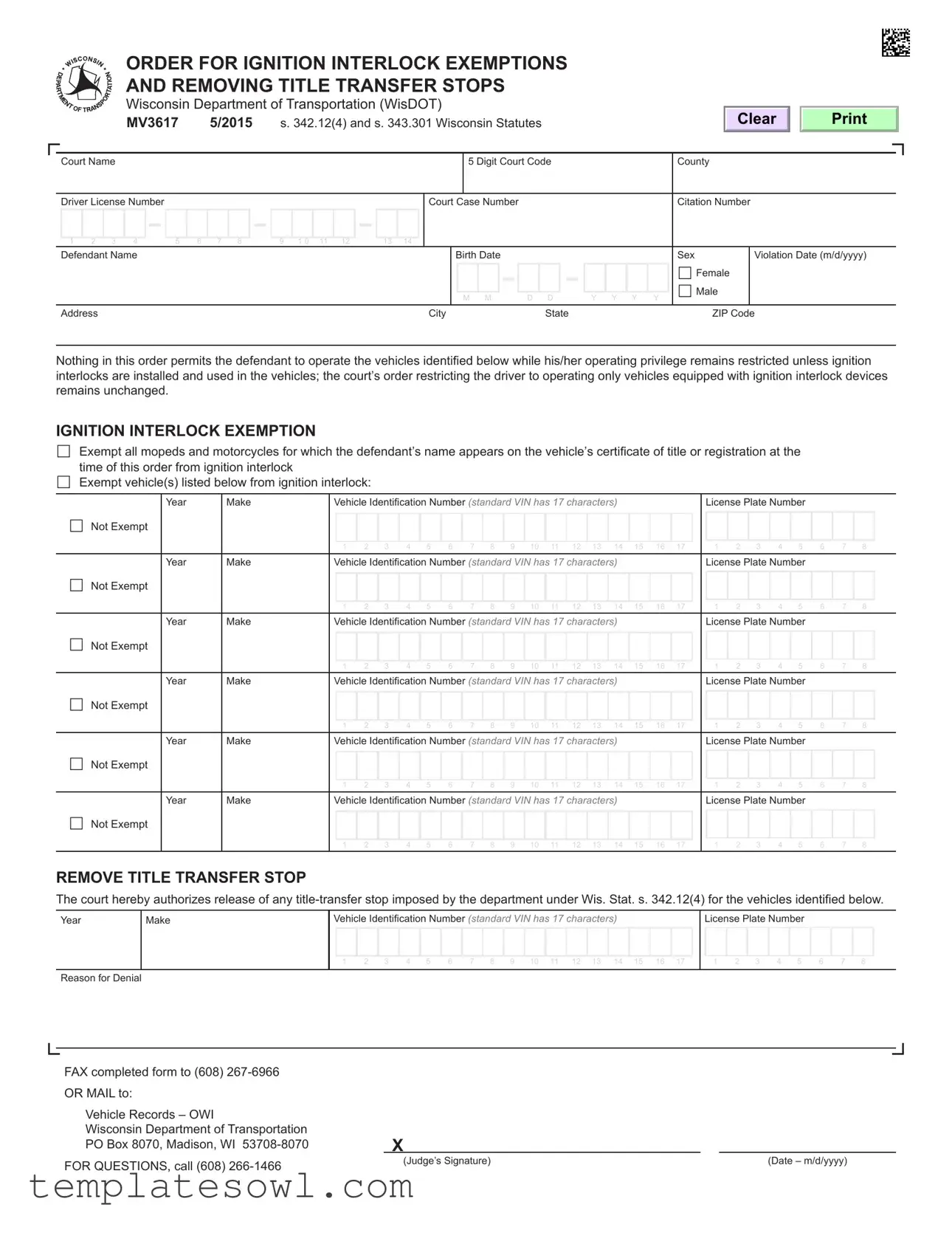What is the MV3617 form?
The MV3617 form, also known as the Order for Ignition Interlock Exemptions and Removing Title Transfer Stops, is utilized in Wisconsin. It is issued by the Wisconsin Department of Transportation (WisDOT) and facilitates requests for exemptions from ignition interlock requirements for certain vehicles, as well as the removal of title-transfer stops.
Who needs to fill out the MV3617 form?
This form is typically completed by individuals who have been ordered by a court to install ignition interlock devices in their vehicles due to violations related to impaired driving. If a driver believes certain vehicles should be exempt from this requirement, they can use the MV3617 form to request that exemption.
What is an ignition interlock device?
An ignition interlock device is a breathalyzer installed in a vehicle that prevents it from starting if it detects alcohol in the driver's system. Courts may mandate the use of these devices for drivers convicted of certain alcohol-related offenses to help ensure public safety.
What information is required on the MV3617 form?
To complete the MV3617 form, individuals must provide details such as their driver’s license number, court case number, defendant’s name, and birth date. Additionally, vehicle information like the make, year, and Vehicle Identification Number (VIN) must be included for vehicles being considered for exemption.
Can all vehicles be exempt from ignition interlocks?
No, not all vehicles can be exempted. The court can only grant exemptions for mopeds and motorcycles when specified on the title or registration. Each request depends on the specifics outlined in the court’s order and the details provided in the MV3617 form.
How does a person submit the MV3617 form?
The completed MV3617 form can be submitted via fax to (608) 267-6966 or mailed to the Vehicle Records – OWI at the Wisconsin Department of Transportation's address provided on the form. It's crucial to ensure all necessary information is included to avoid delays in processing.
What happens if the court denies the exemption?
If the court denies the exemption request outlined in the MV3617 form, the court will typically provide a reason for the denial. Understanding this reason can help the individual address any issues or misunderstandings related to the court's decision.
Is there a deadline to submit the MV3617 form?
The MV3617 form should be submitted promptly following the court's order. While a specific deadline might not be universally outlined, acting quickly is advisable to ensure compliance with the court's requirements and to keep driving privileges intact.
Who do I contact for questions regarding the MV3617 form?
For assistance or any questions about the MV3617 form, individuals can contact the Wisconsin Department of Transportation at (608) 266-1466. They can provide guidance and clarify any concerns regarding the ignition interlock exemption process.

